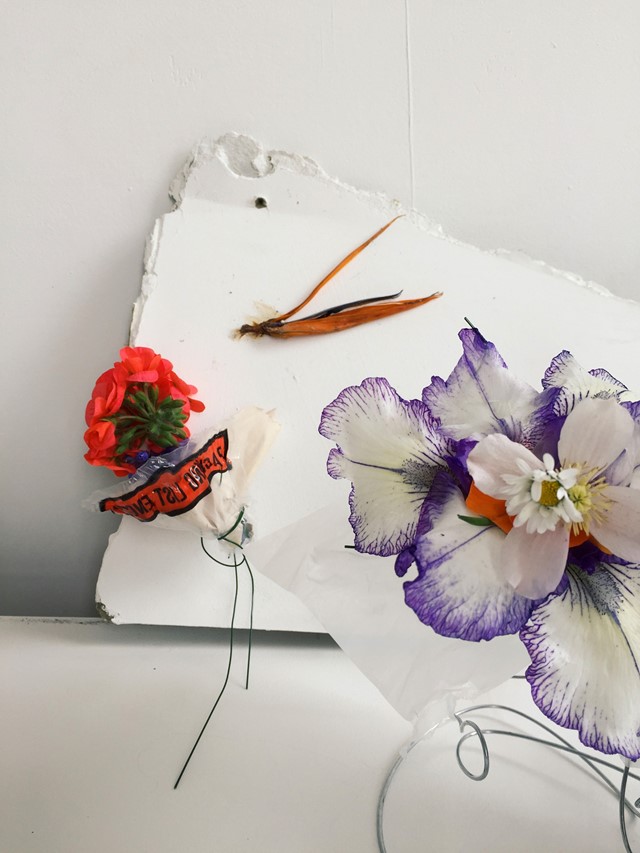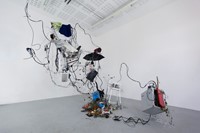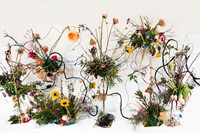From dying flowers to discarded shopping trolleys, William Farr’s work is a “joyous celebration of decay”, he tells Liam Hess
“I think we spend a lot of time sweeping things away, trying to ignore them or pretend they aren’t there,” says London-based artist William Farr on the everyday junk he transforms into intricate works of sculpture. “I don’t see that as horrifying – it’s joyous. I want to celebrate decay.” Combining everything from wilting blooms of flowers to burning matches and even a supermarket trolley, Farr’s ephemeral sculptures are preserved in photographs that he either exhibits or posts to Instagram, where he also runs a separate account, @gathers_together, that encourages followers to submit images of their own foraged flowers.
Farr’s broad botanical knowledge is a result of growing up in a green-fingered family in West Yorkshire. “My grandma used to enter Women’s Institute competitions and win the floristry prizes, and my brother is now a landscape gardener,” he adds. “As a teenager, I was always building fires, playing in the dirt, taking apart mechanical things.” It’s this tension between nature and the man-made that lends his work a striking, eclectic charm – upon moving to London at the age of 18, both flowers and the detritus that littered the streets became his medium.
With the fleeting nature of sculptures that have a life cycle of their own, there’s a keen awareness of mortality running through Farr’s work. As with a memento mori still life by a Dutch Golden Age master, the split second between a flower’s full blossom and its atrophy is captured in the photographs that Farr often exhibits alongside the sculptures. His intention, however, is celebratory rather than morbid. “It’s all around us: look outside and you can see leaves falling off trees and decomposing on the ground. I even see it in people, visibly ageing.” There’s something to be said for Farr’s ability to find beauty in the everyday – perhaps we could all benefit from looking at the world around us through his surreal, optimistic lens.
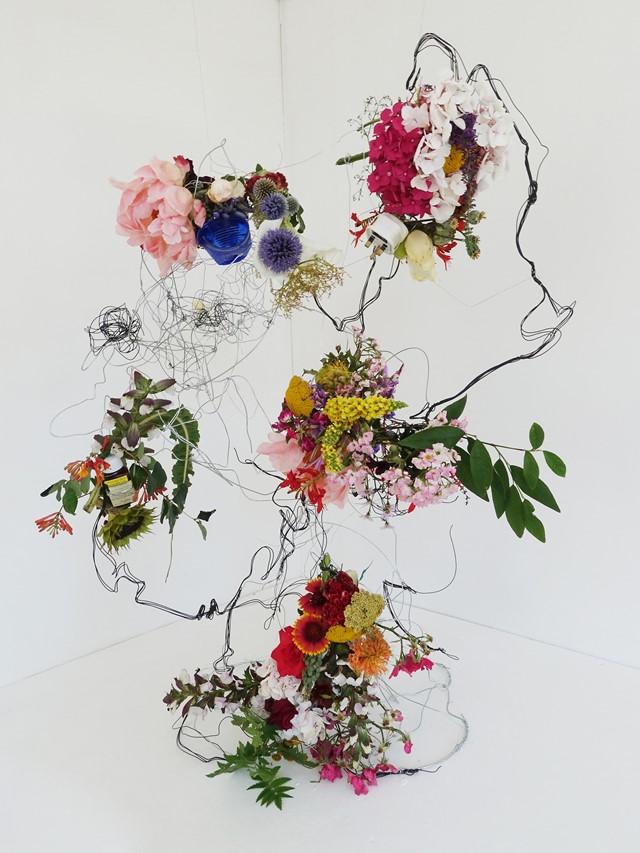
On the relationship between man and nature...
“I’ve always been fascinated by how humans interact with nature: we have this very destructive urge to break the branch, or squish the bug, we always want to poke and prod. We really romanticise nature, but there’s so much beauty in the decay as well, taking things that are destroyed or discarded and elevating them, making them beautiful, even if it’s something I’ve just picked up off the street. It’s really about recontextualising rubbish – it’s easy to get caught up in a really tight framework of how things should look, but a lot of the time it’s just arranging it and setting it against a white background.”
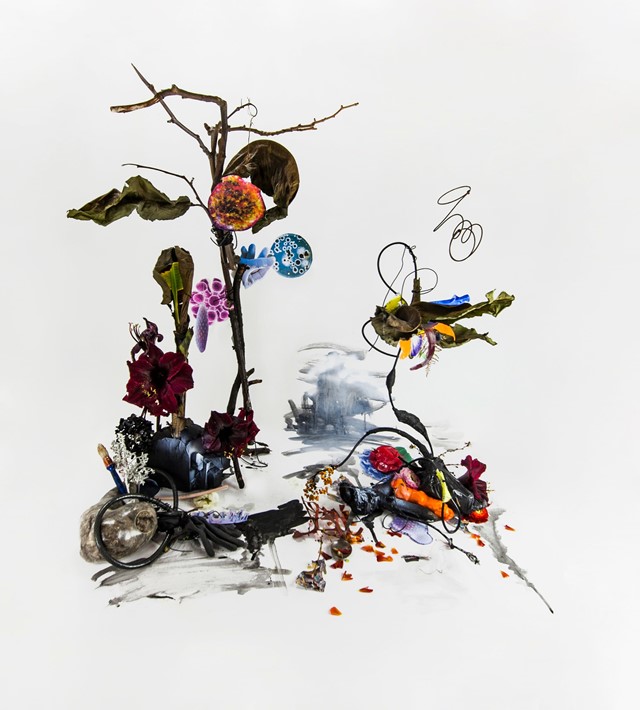
On the magic of chance discoveries...
“It can be something really simple that becomes attractive. It might happen that I’m throwing out a cap of a Fairy liquid bottle, but then I take a second look at the colourful piece of plastic and think, hey, maybe that’s an interesting piece of design in itself. Sometimes I’ll have a friend over while I’m working and they’ll have something hanging around the bottom of their bag that just feels right. I like being a position to curate this mess that’s going on around me, and getting people to join in. With @gathers_together, quite often people will come back and say, I can’t do this, or ask, how do I arrange flowers? I find it strange that people can’t just hold some flowers in their hand and admire that they’re beautiful, because they’re conditioned to have these really rigid ideas of what counts as creativity, whether what they’re making is valid or not. Just by putting them together and making that choice, it has an inherent value.”
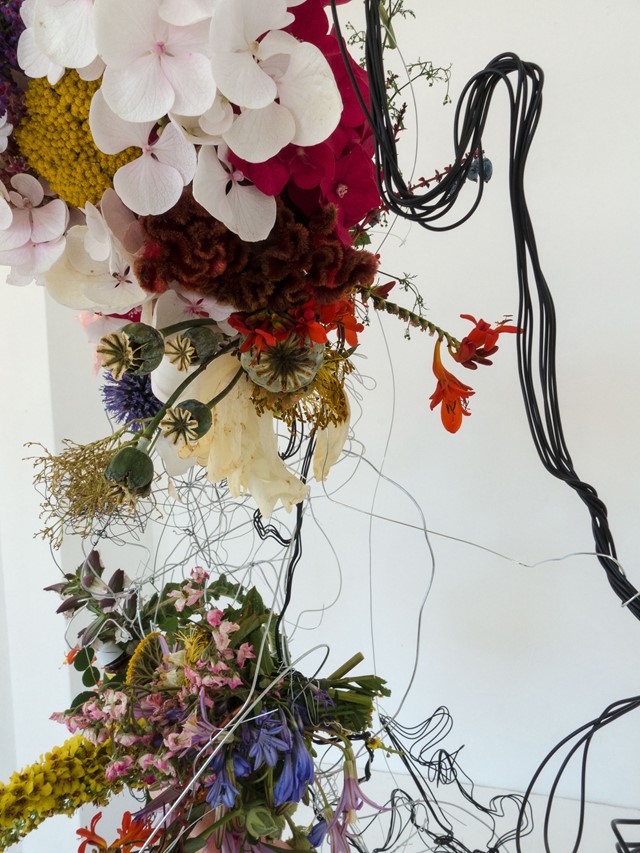
On capturing the moment...
“It’s always just a feeling. I started shooting on film recently, and I realised that within the ten shots I’m taking on that camera, the right image is always in there, rather than the hundreds I’ve taken on digital. Without realising it, I’m being so much more considerate. I never know what flowers will be growing, or what rubbish I’m going to find, but it feeds into that messiness or unpredictability that I really like. I feel like we’re all trying to clear away that mess from our lives, or manage it, when it’s easier to just absorb the mess and reshape it.”
On nature’s darker side...
“It’s not meant to be about the horror of something dying, instead it’s meant to be a joyous celebration of decay. It’s beautiful because it’s alive, and because someone has really given it their time. I guess some people would look at it and say, ‘why has he put all that work into something that just looks like it’s dying?’ But it’s about that cycle that we’re all constantly experiencing. If you look out at the trees, you see leaves that are alive, some that are dying or falling into sticky piles. I even see it in people, as they’re visibly ageing. It might sound morbid, but it isn’t meant to be.”
